Update April 2018: I went back and reworked the entirety of this entry for Kingdom A&S. You can see the documentation here:Stew on Ship and photos here.
28. 29.
At Lionsdale’s Winters Tourney this year I entered the Arts and Sciences competition and won. The theme of
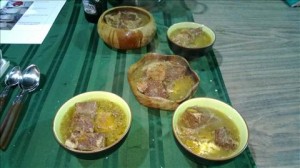
the competition was the chorus of “The Ship Called Lionsdale” which is a filk some of our local members wrote a few years ago. In that theme I decided to make a meal that could have been eaten on that ship. For this I used naval regulations, food preservation, and other, journals, information on the recovered Mary Rose and cookbooks from the 16th century to work out a potential meal.
Lionsdale Winters Tourney
Lionsdale Arts & Sciences Championship
February 2, 2013
Introduction
A Ship Called Lionsdale: Chorus
And it’s all, all underway,
We’re loaded up with food and ale
From figurehead to embroidered sail
With Norsemen and Cavalier,
We’ll sail the oceans of An Tir
And hopefully we’ll live to tell the tale
Sailing on a ship called Lionsdale [1]
A ship called Lionsdale was for many years the unofficial anthem of our shire, it tells of the good food, drink and
artistry of our shire. But what does it mean to be loaded up with food and ale? What would a ship have carried, how would they have cooked it, how would they have eaten it? To answer these questions I looked into the regulations in various countries, several journals which focus on either food preservation or marine topics, and the information gleaned from the recovered Mary Rose, and then compared that to the recipes found in the cookery books of the day.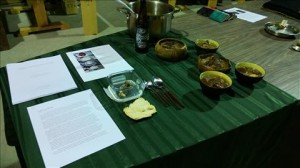
The Mary Rose was an English Warship that sank on July 19, 1545, and by examining the remains of it we can learn a great deal about not only how food was cooked onboard a ship, but what food was cooked. She was built in the first years of Henry VIII’s reign and was rebuilt in 1536. She generally carried around 400 men between sailors and soldiers, though she could carry as many as 700.[2] The Mary Rose was not designed for long trips and would have been restocked frequently allowing it to have food that would spoil on a longer voyage, such as a voyage of exploration across the ocean, or around the horn of Africa. However, the amount of food stowage, known as victuals at the time, carried on board the Mary Rose show that she could have lasted for a very long time on the carried food. When she was discovered again in 1971 and recovered in 1982 she had the remains of food, eating and drinking dishes, and cooking tools, which helps us see what and how was cooked on board.
Common Ship Victualling
Victuals on board ship would vary by nation, but in England in the 16th century they had set regulations for the amount of food required onboard ship depending on the crew. Although fresh food was common on board ship for shorter trips they also carried, and sometimes relied on, the preserved food they had: “salted beef, pork and fish, cheese, pease, butter  and biscuit”[3] were all common foods. According to the Mary Rose Trust the 1565 English regulations required that in any given week the men received ships biscuits, beer, salted beef, fish, butter, and cheese[4] and by 1588 they had added bacon and peas to the menu[5]. The Spanish victuals of the same time were ships biscuits or bread, wine of various sorts, bacon, rice, cheese, beans, chickpeas, fish or shellfish of various sorts, beans, oil, and vinegar[6]. What is very interesting to our modern eyes is that there is very little evidence of scurvy found in the bodies of sailors recovered from sunken ships that were not on extended voyages, which seems to indicate frequent stops to get fresh fruit or vegetables for on board the ships. In fact, on the Mary rose they found many baskets of plum stones, believed to be from fresh and not dried plums, showing that fresh fruit was commonly available on the ship.
and biscuit”[3] were all common foods. According to the Mary Rose Trust the 1565 English regulations required that in any given week the men received ships biscuits, beer, salted beef, fish, butter, and cheese[4] and by 1588 they had added bacon and peas to the menu[5]. The Spanish victuals of the same time were ships biscuits or bread, wine of various sorts, bacon, rice, cheese, beans, chickpeas, fish or shellfish of various sorts, beans, oil, and vinegar[6]. What is very interesting to our modern eyes is that there is very little evidence of scurvy found in the bodies of sailors recovered from sunken ships that were not on extended voyages, which seems to indicate frequent stops to get fresh fruit or vegetables for on board the ships. In fact, on the Mary rose they found many baskets of plum stones, believed to be from fresh and not dried plums, showing that fresh fruit was commonly available on the ship.
On an English ship in the 16th century there were three types of days when it came to food. Fish days: Wednesday, Friday, and Saturday; Flesh days: Sunday, Tuesday, and Thursday; and Bacon day: Monday[7]. On any given day a man was entitled to one pound of ships biscuits, a quarter pound of cheese, two ounces of butter, and a gallon of beer. On a day where peas were served each man would receive one pint of peas (likely dried) per meal. On a fish day a sailor would get (between the two meals) approximately one pound of fish (primarily cod) either dried or salted, on a bacon day they would get one pound of bacon (again two meals), and on a flesh day they would receive two pounds of salted beef (one pound per meal)[8]. The primary beverage on board an English ship was Beer, because it stores longer than water without being contaminated[9], and on the Mary Rose they found a number of sealable drinking vessels (such as leather bottles with corks or tankards with lids) so that men could take their beer ration with them throughout the day.
On the Mary Rose they found a great deal of food remains and casks and staved containers that they believe contained victuals. The barrels contained cattle bones, pig bones, cod, mutton, and venison, as well as evidence of beer. They also found dozens and dozens of containers that they are unable to determine what was in them, but they were found with the other food stores. They were likely some sort of foodstuffs that don’t leave traces (such as peas or bacon).
Cooking onboard ship
Cooking onboard ship during the 16th century was done in the area of the ship called the “kychen”[10]. One or more brick fireboxes would be in the hold, about midship, with a large copper cauldron for each[11]. In addition to the cauldrons smaller higher quality pots were also found aboard the Mary Rose along with cooking dishes made out of redware, stoneware, pottery, iron, and bronze[12]. Other tools, such as cooking knives and a bronze mortar were also found. Food was stored in many locations on the ship, such as near the kychen, on the middle deck, and even on the main deck. Although most of the food was likely boiled there are also references to food being toasted, grilled, or fried[13].
Though fires onboard ships have always been a concern, there is ample evidence that the primary way of cooking was with firewood. Firewood was recovered on the Mary Rose still in a pile beside the stoves. Passengers on merchant ships were frequently required to make their own meals, and at several maritime city states, such as Venice, had statutes specifying the amount of wood each passenger was expected to have[14].
Recipe
Original
From A Proper New Book of Cookery, 1575, transcribed by Daniel Myers three versions of stew with plums: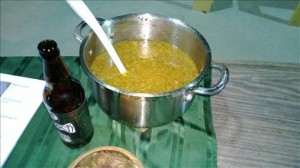
To make a stued broth for Capons, mut- ton, biefe, or other hotte meate, and also a broth for all maner of freshe fishe. Take halfe a handul of rosemary and asmuche of time, and binde it on a bundel with threde after it is washen, and put it in the pot, after that the pot is cleane scommed, and let it boyle a whyle, then cut soppes of white bread, and put them in a greate charger, and put on the same scaldinge brothe, and when it is soken inoughem strayne it through a strayner, with a quantytie of wine or good ale, so that it be not to tarte and when it is stray- ned, poure it in a potte, and then put in your raysins and prunes, and so let them boyle till the meate be inough. If the brothe bee to sweete, put in the more wine, or els a litle vineger.
To stew Capon in whitebroth. Take foure or .v. biefe bones to make your brothe, then take them out when they are sodden, & strain the broth into an other pot, then put in your capons whole with rosemary, & put them into the pot and let them stew, and after they have boiled a while, put in while mace bound in a white cloth, and a hanfull or twain of whole parsly, and whole prunes, & let them boile well, and at the takinge up, put to a litle veriuyce & salt, & so straw them upon soppes, and the marrowbones about, and the marrow laide hole about them, and so serve them forth.
For to stewe Mutton. Take a necke of Mutton and a brest to make the broth Stronge, and then scum it cleane, and when it hath boyled a while, take part of the broth, and put it into another pot, and put thereto a pound of raisins, and let them boyle till they bee tender, then strayne a little bread with the Raisins and the broth all together, then chop time, saverye, and Persly with other small hearbes, and put into the Mutton, then put in the strayned Raysins with whole prunes, cloves and mace, Pepperm Saffron and a little salt, and if ye list, ye may stew a Chicken withall, or els sparrowes, or such other little byrdes.
The three were taken from different sections of the manuscript.
Redaction for onboard ship
The combination of the three recipes shows some similarities. All three are made with a stock from beef or mutton bones and have prunes. The use of bread (likely for thickening), a bittering agent (verjuice, wine, or ale) is used in two of them, as are raisins in addition to the plums. Rosemary, thyme, parsley and mace are the standard spices, salt as well, but as I’ll be using salted beef I will be adding salt only at the very end, and only if absolutely necessary.
My version:
- Large sprig Rosemary
- 2 tsp Thyme
- 2 tsp Savoury
- 1 tsp Mace
- 4 Plums
- Beef bones
- 2 lb 4 oz salted beef
- 2 Ships biscuit
- 1 bottle Ale
- Put rosemary in a cheese cloth, and put that and the beef bones in a pot of water
- Boil until it makes a strong stock, skim the top and remove the herbs and bones
- Separately boil the salt beef in water with a bit of ale added
- Put the ships biscuits in a separate large bowl and ladle some stock over it
- Let it sit for a while then strain that back into the stock
- Pour the ale through the bread as well
- Add stoned & quartered plums, thyme, savoury, and mace to the stock
- Take the beef out, chop it roughly and add it to the stock
- Stew till meat is done
- Serve over ships biscuits, makes two servings.
- Making beef stock
- Soaking ships biscuits in the stock
- Parboiling the salted beef
- Boiling beef
- Reconstituted beef
- Looks tasty
- Yep, that’s a plum
- The completed stew
- Stew being served
- Lots of beef per person
Ingredients
Ships Biscuits
In the 16th century a Biscuit was just a flour based item that was baked and then rebaked to dry it. Drying it would allow it to last longer than it would otherwise, or give it a hard crunch (think biscotti). This is especially helpful for ship travel as anything to allow the food to keep from spoiling would be used. Recipes for biscuits, fine biscuits, French biscuits, prince biscuits, and biscuit bread abound in cookery books from in the 16th and 17th centuries. The only similarity that is in all of them is that they are twice baked. Ships biscuits are frequently referred to as being a very basic type of food, and that the biscuits used in war time were made “twise baked, and without leauen or salt: because it should not vinewe or mowell in short time”[15]. Although I found recipes for biscuits in The Good Huswifes Jewell (1596), Delightes for Ladies (1609), and Libre del Coch (1529) the only cookery book I found that had a recipe that had no salt or leaven and didn’t include any ingredients that could spoil rapidly was one from Um tratado da cozinha portuguesa do século XV (A Treatise of Portuguese Cuisine from the 15th Century) which was translated by Fernanda Gomes[16] in 2006[17].
The recipe in which the simple biscuits are mentioned is one where the biscuits are being ground to flour afterward for a different recipe. It tells us:
Take 7 litres of wheat flour and divide it into two equal parts. Make a well in each part, putting in one of them, one 1 litre can of olive oil, and in the other, hot water. Knead the two parts seperately, such that the doughs become very well kneaded, and ready to roll out. Next, with each one of these doughs, manke buiscuits of the size you desire, and take them to the oven to bake, that they do not become too browned.[18]
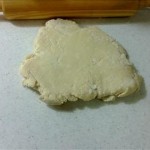 Although the writer talks about two different types of biscuit the one we want is the one which is just water and flour. This recipe gives us both the amounts of ingredients and the cooking instructions[19]. The only thing left out is the baking temperatures, however the other recipes I found agreed that biscuits should be cooked at bread temperature[20] (for a modern oven that maintains a steady temperature this should be about 400°F, but at the time would be from anywhere between 400°F to 500°F). The Good Huswifes Jewell also says that when drying the temperature should be low enough to easily put your hand inside the oven without worrying.
Although the writer talks about two different types of biscuit the one we want is the one which is just water and flour. This recipe gives us both the amounts of ingredients and the cooking instructions[19]. The only thing left out is the baking temperatures, however the other recipes I found agreed that biscuits should be cooked at bread temperature[20] (for a modern oven that maintains a steady temperature this should be about 400°F, but at the time would be from anywhere between 400°F to 500°F). The Good Huswifes Jewell also says that when drying the temperature should be low enough to easily put your hand inside the oven without worrying.
The recipe I used for it was: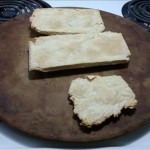
- 2 cups flour
- ¼ cup water
- 2 Tbsp water
- Make well in flour
- Add ¼ cup water
- Knead till it can be rolled out (if needed add some of the extra water)
- Roll out dough and cut into preferred shape
- Bake in oven 400°F for an 60-90 minutes or until it begins to brown
- Remove, allow to cool
- Bake at 170°F until fully dry
- Remove, allow to cool
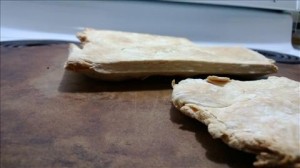
Plums
Although the recipes call for prunes, the word prune seems to be interchangeable with the word prune during the 16th century[21]. On board the Mary Rose they found basket after basket of plum stones, and they are believed to have come from fresh plums rather than prunes[22]. They found five different varieties of plum stone, and so we can assume that the Common European Plum (Prunus domestica) was included, and likely the Shropshire Prune as well (one of the other oldest surviving varieties of plum in England)[23]. For this reason I’m using common plums in this recipe.
Salt Beef
Salting meat is something that I’ve done a few times now. You can see the full process and documentation in the North Wind issue # 335, July 2010.
- 2lb 4oz beef (I used half of a round roast)
- 4lb pickling salt
- Cover bottom of container in salt
- Place beef on top
- Cover with salt, ensuring that no air can get to the beef
- Seal and place in a cool dry place
- If excessive moisture coming off beef change salt (I did this after four days)
- Salt Beef will be ready in 14 days
- The beef
- For this salt is essentialy salt. No need for anything fancy
- Make sure there’s salt on the bottom
- Exactly what it looks like
- Cover that all up
- I’m not sure if air tight is required, but I’m gonna keep doing it. Also cool and dark (like my garage)
- The uncovering
- That is one salted chunk of beef
- A loss of 7.3 oz.
- That looks great
- Perfect, just a hint of pink left, no ability for bacteria to grow.
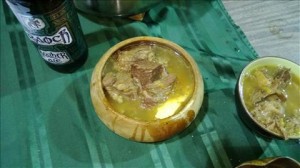
Works Cited
British History Online. Simancas: April 1588, 21-30. Vols. 4: 1587-1603, in Calendar of State Papers, Spain (Simancas), edited by Martin A. S. Hume, 269-275. 1899.
Crowley, Robert. The Subtyle Sophistrie of Thomas VVatson. London: Henry Denham, 1569.
Dawson, Thomas. The Second part of the good Hus-wiues Jewell. London, 1597.
Dunne, P., and C.L. Mackie. “Bread Upon the Water.” Historic Preservation 45, no. 5 (1993).
Friel, Ian. “Guns, Gales and God Elizabeth I’s ‘Merchant Navy.” History Today 60, no. 1 (2010): 45-51.
Gwynarden, Faerisa. A Treatise of Portuguese Cuisine from the 15th Century. 2006.
Mary Rose Trust. Mary Rose Collection. http://www.maryrose.org/ (accessed Januray 8, 2013).
Mary Rose Trust. Mary Rose Trust Electronic Archive. Portsmith, UK.
O’Briain, Pierce, and Kateryn Drake. A Ship Called Lionsdale. 2004.
Pryor, J.H. “Firewood at Sea.” Mariners Mirror 75, no. 1 (1988): 96.
Slow Food UK. “Shropshire Prune Damson.” Slow Food UK. http://www.slowfood.org.uk/ark-products/the-shropshire-prune-damson-2/ (accessed January 28, 2013).
[1] Pierce O’Briain & Kateryn Drake, “A Ship Called Lionsdale”, 2003.
[2]M ary Rose Trust, “Mary Rose Collection,” Accessed January 8, 2013, http://www.maryrose.org/
[3] Ian Friel, “Guns, Gales and God Elizabeth I’s ‘Merchant Navy,’” History Today 60(1) (January 2010): 45-51.
[4] Mary Rose Trust
[5] Calendar of State Papers, Spain (Simancas), Volume 4: 1587-1603 (1899), pp. 269-275.
[6] Calendar of State Papers
[7] Ibid.
[8] Ibid.
[9] Ian Friel, “Guns, Gales and God Elizabeth I’s ‘Merchant Navy,’”
[10] Mary Rose Trust
[11] Ibid.
[12] Portsmith, UK, Mary Rose Trust, Mary Rose Trust Electronic Archive
[13] Ian Friel
[14] J.H. Pryor, “Firewood at Sea,” Mariners Mirror volume 75, issue 1 (1988): 96
[15] Robert Crowley, The Subtyle Sophistrie of Thomas VVatson, (London: Henry Denham,1569), 169.
[16] Mistress Faerisa Gwynarden in the SCA
[17] Um tratado da cozinha portuguesa do século XV is taken from a section of O Livro de Cozinha da Infanta D. Maria which was a Portuguese book originally believed to be from the late 15th century, however there is no internal dating. It is now thought to be a compilation of recipes that was begun in the late 15th century and was finished in the mid 16th century. For more information on the history of this work see http://www.oldcook.com/medieval-livres_cuisine_portugais
[18] Faerisa Gwynarden, A Treatise of Portuguese Cuisine from the 15th Century, http://www.sca.org.au/cooks/Pages/articles/Faerisa/A%20Treatise%20of%20Portuguese%20Cuisine%20From%20the%2015th%20C.pdf, 2006.
[19] The use of the well in the flour and filling it with water is also mentioned in “Bread Upon the Water”, P. Dunne & C.L. Mackie, Historic Preservation Vol. 45 Iss. 5 (1993), p. 72
[20] Thomas Dawson, The Good Huswifes Jewell, (London: Edward White, 1596), f13r.
[21] Oxford English Dictionary
[22] Mary Rose Trust
[23] Slow Food UK, Shropshire Prune Damson, http://www.slowfood.org.uk/ark-products/the-shropshire-prune-damson-2/, accessed January 28, 2013.
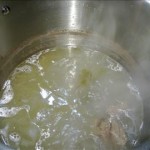
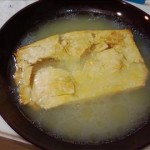
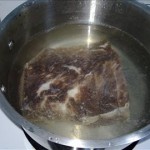
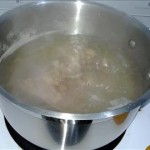
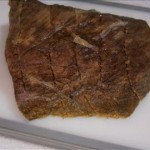
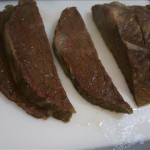
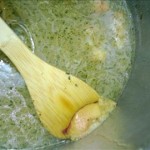
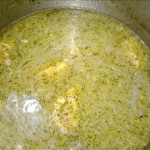
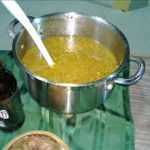
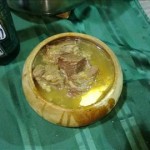
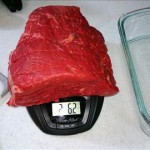
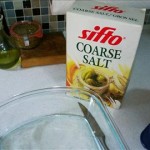
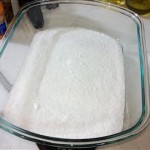
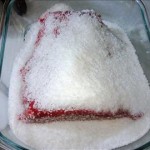
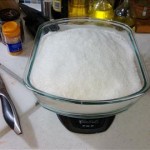
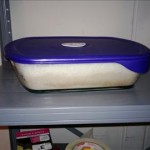
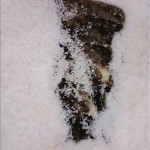
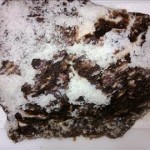
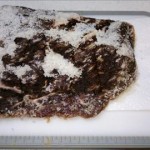
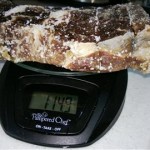
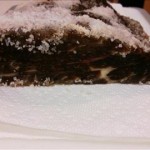
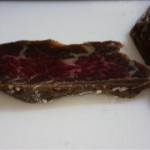
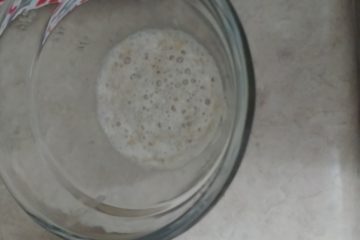
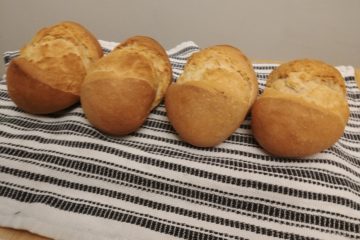
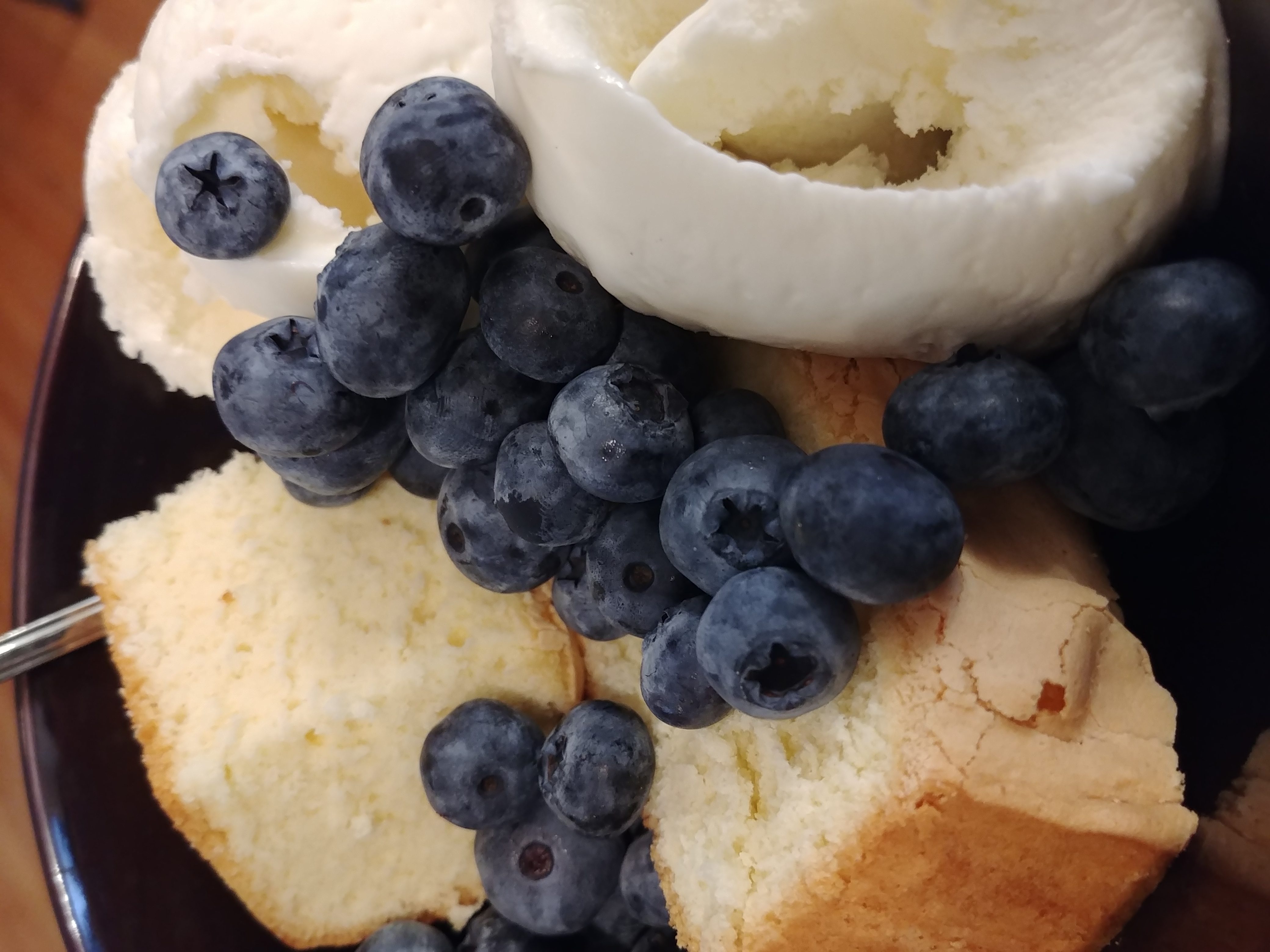
4 Comments
amaya · May 26, 2022 at 7:01 pm
I’m writing a historical fantasy set in the golden age of piracy. Your articles are a life saver.
Tomas de Courcy · May 26, 2022 at 9:05 pm
You’re very welcome, I’m glad it was helpful!
Daniel Crossa-Wilkinson · March 5, 2023 at 2:13 pm
I am desperately trying to find out what early through mid-18th century (1700-1750) sail ships in England (or The Netherlands) called their common dining areas and kitchens. All I could find was the following: GALLEYS for kitchens? Dining MESS for common dining areas? SCULLERY for the area designated to clean pots and pans and dispose of food scraps? Would these terms be time-appropriate for these places within a sail ship? I am most interested in ships belonging to the Dutch East India Company. But anything would help because I have not been able to find ANYTHING related to this specific topic.
Update, Rest of October – A Boke for My Remembrance · November 12, 2018 at 3:40 pm
[…] found a very useful set of instructions at Thomas de Courcy’s “A Meal on Board Ship in the 16th Century.” As part of his larger project, de Courcy provides a full set of illustrated steps for salting […]
Comments are closed.